Korean Alcohol – Must Try Korean Drinks!

The popularity of Korean alcohol has been rapidly rising over the past few years. However, while it’s now easy to find soju and makgeolli in many liquor stores worldwide, these two Korean alcohols make up only a tiny part of what’s available in South Korea.
Around one year ago, I wrote a post discussing the best Korean beers. At the time, I had also intended to put together a post discussing the best Korean alcohol. However, as you have probably noticed, this article got delayed a bit. This makes me very excited to get this article published today finally!
Anyway, despite soju and, to a lesser degree, makgeolli becoming rapidly popular, other Korean alcohols are left almost unheard of outside of Korea. As someone who doesn’t like the taste of soju in the slightest, it frustrates me to see so many fantastic types of alcohol being entirely overlooked.
Therefore, this post felt like something I had to do. So, whether you’re visiting Korea and want to get a taste of the local drinks or if you want to source some delectable Korean alcohol locally, this list is designed to give you some ideas of what to try.
I’m a big fan of makgeolli (Korean rice wine), and it’s always my go-to. However, it’s not everyone’s cup of tea, so I wanted to include as wide a range of Korean alcohols as possible. With that being said, let’s get started with the must-try Korean alcohol!
This article contains affiliate links. Affiliate links provide me with a percentage of purchases made from links on this page. This comes at no extra cost to you – for more information, please refer to my affiliate disclaimer.
1. Soju

The classic staple in not just its origin, Korea, but around the world! Soju, simply put, is unsurprisingly the most sought Korean liquor globally, for a good reason and a good reason only!
Soju is Korean alcohol derived from fermented starch and has an alcohol content of anywhere between 20% to 45%. It’s been around for almost 2,000 years in Korea and was popularized during the Joseon Dynasty (1392-1910).
Soju can be made from rice or grains such as wheat, barley, and sweet potatoes. However, it is traditionally made from rice. It is typically distilled twice, unlike most other Korean liquors, which are distilled only once. A great touch in the production process is added sugar during distillation, which gives you that gentle pinch of sweetness.
The reason why soju is so prevalent in Korea? It’s very affordable compared to other liquors due to its lower production costs. You can find soju at convenience stores for around $1.50! If you visit a supermarket, you can find it even cheaper.
Aside from its affordable price, it is also taste-friendly to non-avid drinkers, so you might change your mind (although, perhaps, this is an excellent reason to avoid soju!). Either way, both of these factors make soju accessible to everyone in Korea.
Koreans traditionally consumed sojus during special occasions like birthdays or weddings, but today it’s accessible almost everywhere! So what better way to celebrate the occasion with loved ones than a glass or two of soju?
Some popular brands I recommend include Jinro Chamisul Soju and Chum Churum which both come in original flavours and a range of fruity flavours. While all flavours are made to taste as great as possible, it all comes down to preference, so put those taste buds to the test and find your go-to flavour!
It is important to note the fruity soju flavours tend to have lower alcohol content. If original and fresh flavours are too strong for you, you might want to consider the lower alcohol-content fruity flavours or even low alcohol soju!
All in all, soju is the quintessential Korean alcohol. You probably clicked on this list expecting soju to be at the top, and sure enough, it is! There really isn’t anywhere else to include soju – it’s simply the most famous and well-known Korean alcohol globally.
2. Korean Beer

Korean beer is more of a broad range of Korean alcohols worth trying! In fact, there are so many Korean beers available that I had to dedicate a whole post to the topic. If you’re interested in learning about the best Korean beers, I recommend reading my recent post on Korean beers.
There are three leading beer brands in Korea – Cass, Hite, and Terra. While you will also find other brands such as OB, Max and Kloud, these are less popular in recent times, and most Koreans (especially students in Korea) prefer Cass, Hite and Terra.
Most of these large beer brands fall into the categories of adjunct or pale lagers. Typically, they are very light and taste similar to beers such as Bud Light (and other American adjunct lagers). They’re not famous for being great, but they’re affordable and easy to drink.
If you are looking for great beer, you’ll want to look past the big brands. Craft beer has recently taken off in Korea, and hundreds of breweries are selling every kind of beer you can imagine. A few years ago, I attended a beer festival in Korea and was amazed at the range of fantastic beers on offer.
To try these beers, you must visit a local beer festival or a convenience store. While all convenience stores stock craft beer these days, the best is CU. CU frequently introduces new breweries to its range, and there is always something new to try. Even better, they often have deals for three or four cans of beer for around $10!
Craft beers vary too much to make a broad statement on, but expect the big brands of Korean beer (Cass, Hite, Kloud, etc.) to be quite carbonated. They also tend to have quite a mild taste, with no overly strong notes. For lack of a better way to put it, Korean brand beers taste simply like ‘beer’.
If you want Korean alcohol with a low alcohol percentage, there are also some low alcohol and no alcohol beers beginning to gain traction in Korea. While these beers are still more challenging to find than in many other countries, they are becoming more popular daily.
If you want to try all famous Korean alcohols, you’ll want to ensure you try some Korean beer! Some people love it, and some people hate it. However, it’s well worth trying – especially the beers from the up-and-coming craft scene!
3. Makgeolli
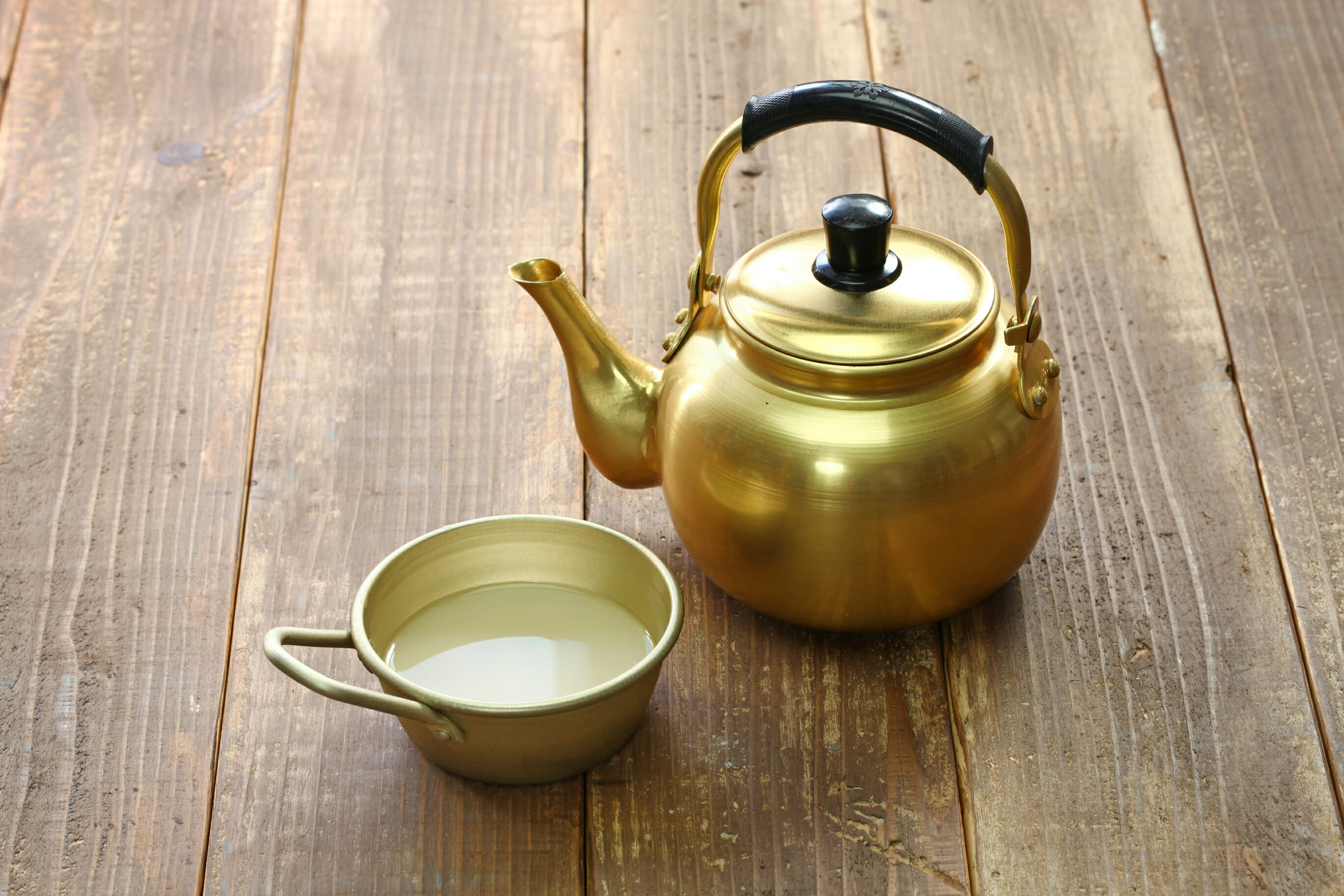
Rice wine (makgeolli) is traditional Korean alcohol made from rice, water, and yeast. It’s cloudy in appearance and has a soft taste with a low alcohol content – usually around 6-8%. In fact, it is the oldest and longest-standing Korean alcohol drink on the entire list!
Makgeolli is made by fermenting rice, yeast, and water using nuruk. This Korean fermentation initiator comes in the form of a dry cereal cake. The resulting brew has a pleasant aroma that can range from sweet to savoury.
The taste of makgeolli is similar, with some brands and types being quite sweet while others are significantly more savoury. Similar to grape wine, makgeolli has many different forms and almost everyone can find a type they like.
Typically, however, makgeolli is very easy to drink. While the initial taste can have a bit of a kick, once you are a few sips in this Korean alcohol becomes exceptionally easy to drink. It’s smooth, and it has a milk-like or yogurt-like consistency. For this reason, you’ll want to make sure you shake the bottle before drinking!
This Korean alcohol is typically served cold and comes in a ceramic or porcelain bowl. It’s often consumed in small amounts as an accompaniment to Korean food. Just recently, though, it has been climbing the ranks among the younger generation as they tend to mix it up with a fruit cocktail to get that pinch of elevated sweetness.
If you fancy fruity flavours, makgeolli usually comes in various flavours, such as raspberry, apple, strawberry, and peach. However, if you prefer the classic original flavour, there are Makegoli brands that specialize in this!
If you want to try some flavoured makgeolli, but aren’t a fan of the sweet flavours, there are a range of types to try! Chestnut makgeolli is my personal recommendation – it’s fantastically smooth and has a slight nutty taste that adds an extra level of complexity to the already delectable drink.
So, if you are ever visiting or strolling around Korean bars and restaurants, see if you can find a glass of makgeolli for yourself and enjoy one of Korea’s old but gold alcohol drinks.
4. Bokbunja

Are you looking for class in a glass? Then Bokbunja might just be “”the one”” for you! Bokbunja is a type of wine made from Korean blackberries. It can be made using various kinds of yeast, including natural wild yeasts and commercially available lactic acid bacteria (LAB).
The primary ingredients for making Bokbunja are Korean-grown blackberries instead of grapes. Unlike most grape-based wines, bokbunja is a more potent Korean alcohol that usually has an alcohol content of 15-20%.
The taste of bokbunja is sweet, like nectarine, with a hint of vanilla. However, after the initial sweetness, you will also taste a strong hit of alcohol – you’ll quickly know this is stronger than grape wine! While blackberries usually aren’t overly sweet, this Korean alcohol is deceptively sweet – more so than the berries themselves!
Bokbunja has been gaining popularity because it contains antioxidants that help fight cancer cells in the body. It is also known to help reduce stress levels and lower blood pressure by increasing nitric oxide (NO) levels in the body, thus improving circulation throughout the heart and brain while reducing inflammation in those areas!
Bokbunja pairs well with any food that doesn’t have an overly strong flavour profile. If you’re eating a mild-tasting dish (such as lightly seasoned fish), bokbunja is a great pairing and one I highly recommend! So, what are you waiting for? Get out there and try this Korean alcohol!
5. Cheongju

Cheongju is a traditional Korean drink made from clear Korean rice wine. It’s similar to Japanese sake but a bit different – it also has a similar alcohol content sitting at around 14%. It is often served with food, although some people do drink it on its own in small amounts. So, if you fancy a glass of sake, you will love cheongju!
The key difference between makgeolli and cheongju is that makgeolli is a filtered version. While you will have some sediment in makgeolli, cheongju is much less filtered and often still contains pieces of rice from the brewing process. Therefore, while some people prefer the easier-to-drink makgeolli, others prefer the more natural feel of this Korean alcohol.
The Korean drink is known to be mild and has a little sweetness in the taste, which stems from its multiple fermentation frequencies of at least two times instead of just one time. The frequency of the fermentation process helps make the drink milder, as some people may find soju a little too strong or intense.
It’s more than just that, though! Like many Korean drinks, it can be hard to pinpoint exactly which category cheongju falls into. It’s not quite like makgeolli because of its higher alcohol content, but it also doesn’t fit into beer or liquor categories either. But hey! That’s part of the fun of exploring new things!
In fact, cheongju has varied tastes in various regions of Korea, including Gunsan, Masan, and Nonsan. However, all three regions are well known for the cheongju they produce. So, the next time you stop by in any or all three of these regions, try to taste the cheongju when you get the chance. Who knows, you might even find a favourite cheongju-producing region to visit the next time!
On a side note: if you’re in Korea near Lunar New Year, you might want to consider trying dosoju. This unique drink is based on cheongju, but it is infused with a range of medicinal herbs. If you want to follow tradition, dosoju should be the first drink consumed on New Year’s Day!
6. Sansachun

Image from Tasteatlas.
Sansachun is a traditional Korean drink made from hawthorn berries that gives a bit of sourness to its taste. Usually, people would take it if they are feeling stressed or anxious over work or other aspects of life to ease those nerves (at a controlled portion, of course). This is what makes it well-known as medicinal alcohol. A drink that is good for your health and tastes good? I’d call that a win-win!
This Korean alcohol has been around for over 400 years. It is known to have medicinal properties to improve physical health, as it has been associated with aiding in relieving nausea to heart disease! For that reason, it has earned the respect of many Koreans to date.
So, if the next time you talk about health issues to a friend or acquaintance in Korea, then you might likely expect to take a glass of Sansachun as a remedy. Sansachun can be found in many restaurants across Korea.
It is also a nice drink to have before meals, as it has been said to boost your appetite or after a meal as it will help you digest the food better. This Korean alcohol goes well with spicy food, making it the perfect accompaniment for your next Korean meal!
7. Baekseju
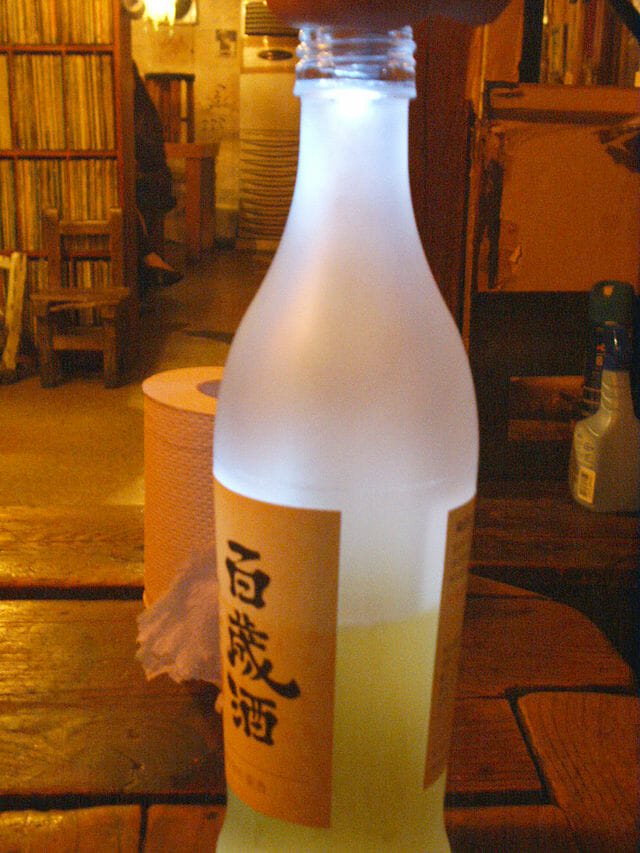

Like a few other Korean alcoholic drinks on the list, Baekseju, too, is one of the longest-standing beverages that has been around for some time! It’s a glutinous rice-based fermented drink with a mix of herbs, including ginseng as the primary ingredient. Its alcohol content usually sits at about 13 per cent.
The drink has been enjoyed by many since way back in the seventeenth century and was later modernized in 1992 by Kooksoondang. Since then, it has been a staple drink in festival celebrations or those impromptu night outs with your loved ones due to its potency from the multiple-staged fermentation process.
What makes this drink a popular complement to any meat-containing meal is its unique nut-like taste that adds to the explosion of flavours in your mouth. Two of the best ways to drink Baekseju are either on its own or by mixing it with soju for a fun mix of tastes as done and enjoyed by locals!
When it comes time to drink Baekseju, you’ll want to go for something mid-range priced so you can enjoy yourself without getting drunk too fast (or too expensively). Because of its relative rarity and potency, it is pretty pricey compared to other Korean alcohols you find in stores around Korea. But hey, if you fancy it, it would be worth every penny, right?
With that being said, in the next feast of meat dishes, make sure you have a bottle of Baekseju or two! I promise it’ll add some flavours to your life, not just in dishes!
8. Flower Wine
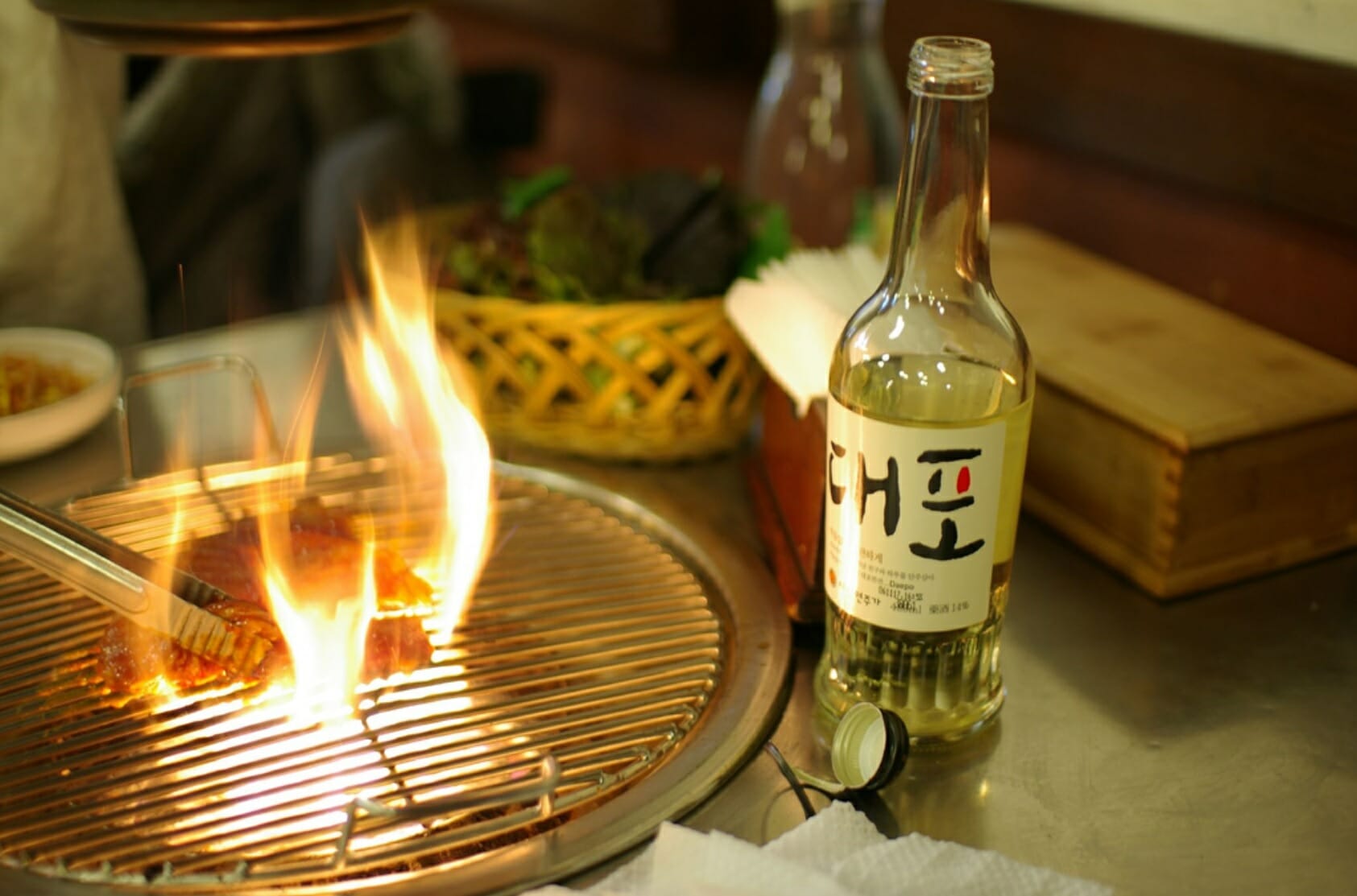
Flower wine is a type of traditional Korean alcohol. It’s made using flowers (as the name suggests), and it has a sweet taste that makes it quite popular among men and women – especially younger crowds.
Like most other Korean alcoholic beverages, flower wine originated from ancient times when brewing techniques were not highly developed. In the past, people used wild grapes as an ingredient for making wine; however, once they realized how much better-tasting flower wines were compared to grape-based ones, these became more popular over time!
Flower wine does not just come in a single variant. It can be made from various flowers, from the classic chrysanthemum to peach blossoms, which taste as good as it sounds! Because of this, its alcohol content may differ from one flower wine to another, but usually, it can go up to about 20%! Otherwise, you can always check the label on the bottle to be sure.
Today, there are many different types of flower wines available depending on what kind of flower you use as an ingredient: mugunghwa (also known as Korean bellflower), rose petals, or jasmine blossoms are common choices. Still, anything goes. If you want something unique, then go ahead and experiment with whatever ingredients sound good!
Flower wines aren’t as common as many Korean alcohols on this list. However, this hasn’t stopped Koreans from enjoying these tasty beverages alongside their favourite snacks like kimchi fried rice or roasted chestnuts during wintertime festivals like Chuseok, which takes place around August every year! You can easily find a bottle of Korean flower wine or two in Seoul, so take a sip when you get the chance!
9. Maeshilju
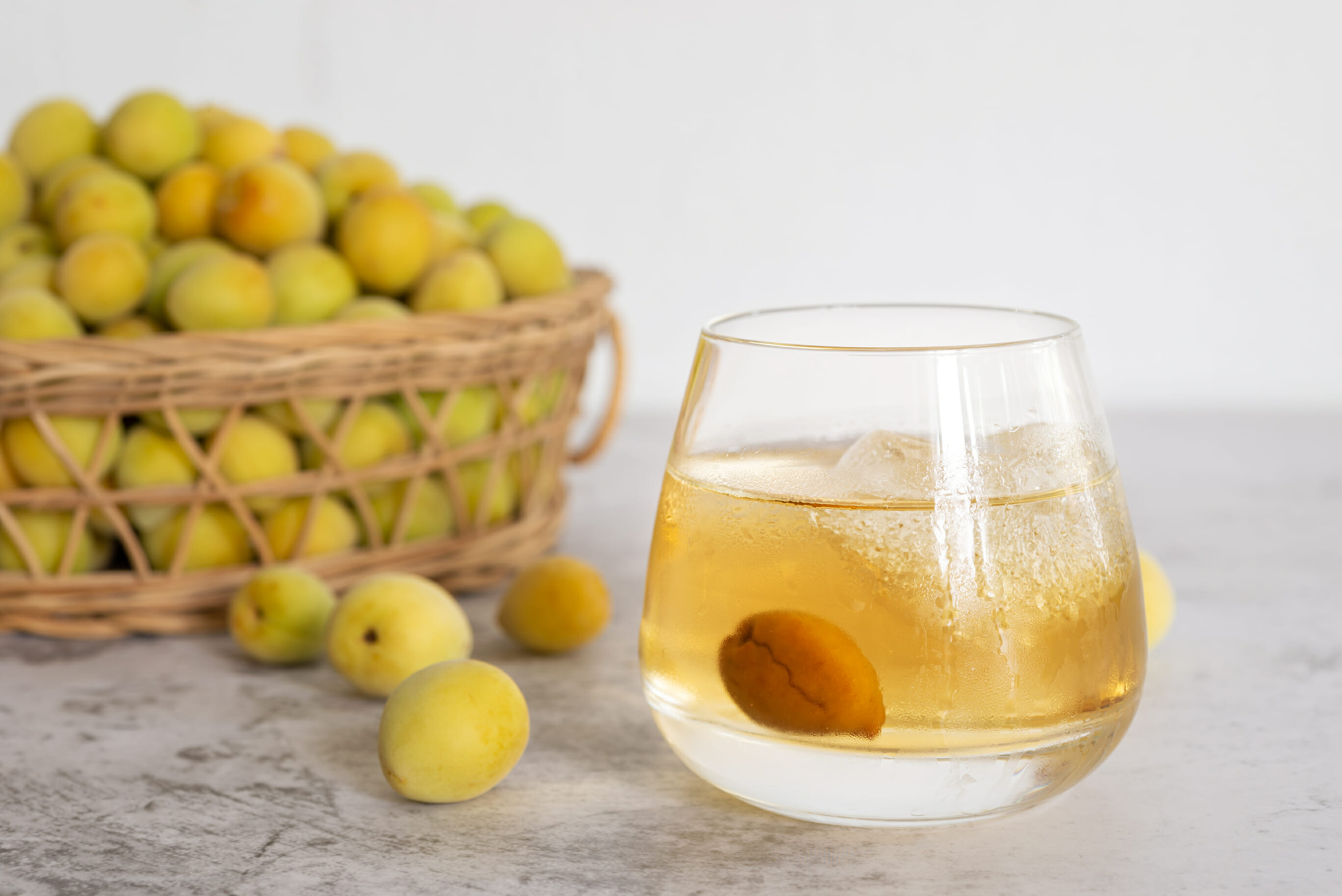
Maeshiliju has been gaining popularity in Korea for its distinct sweetness compared to other Korean alcohol drinks. It’s made from green plums and derives its sweet flavour through its fermentation process, with sweeteners incorporated throughout. This Korean alcohol has around 14% alcohol content.
The fermentation process for Maeshiliju is similar to makgeolli, but the distilled water used during fermentation adds more flavour and sugar content to the final product. So if you’re looking for something sweet, Maeshiliju might be right up your alley!
Maeshiliju is usually served after meals as a sweet dessert drink to seal the meal. Most people save the glass for last because of its sweetness, which often overpowers the meal’s flavours.
It’s often drunk instead of wine when celebrating a graduation party, having dinner with your family, or just a casual night out with the best of friends! After all, spending time with those you hold most dear is always a memorable moment to cherish, so you might as well sweeten it up with a glass of Maeshiliju!
10. Somaek (Soju + Beer)
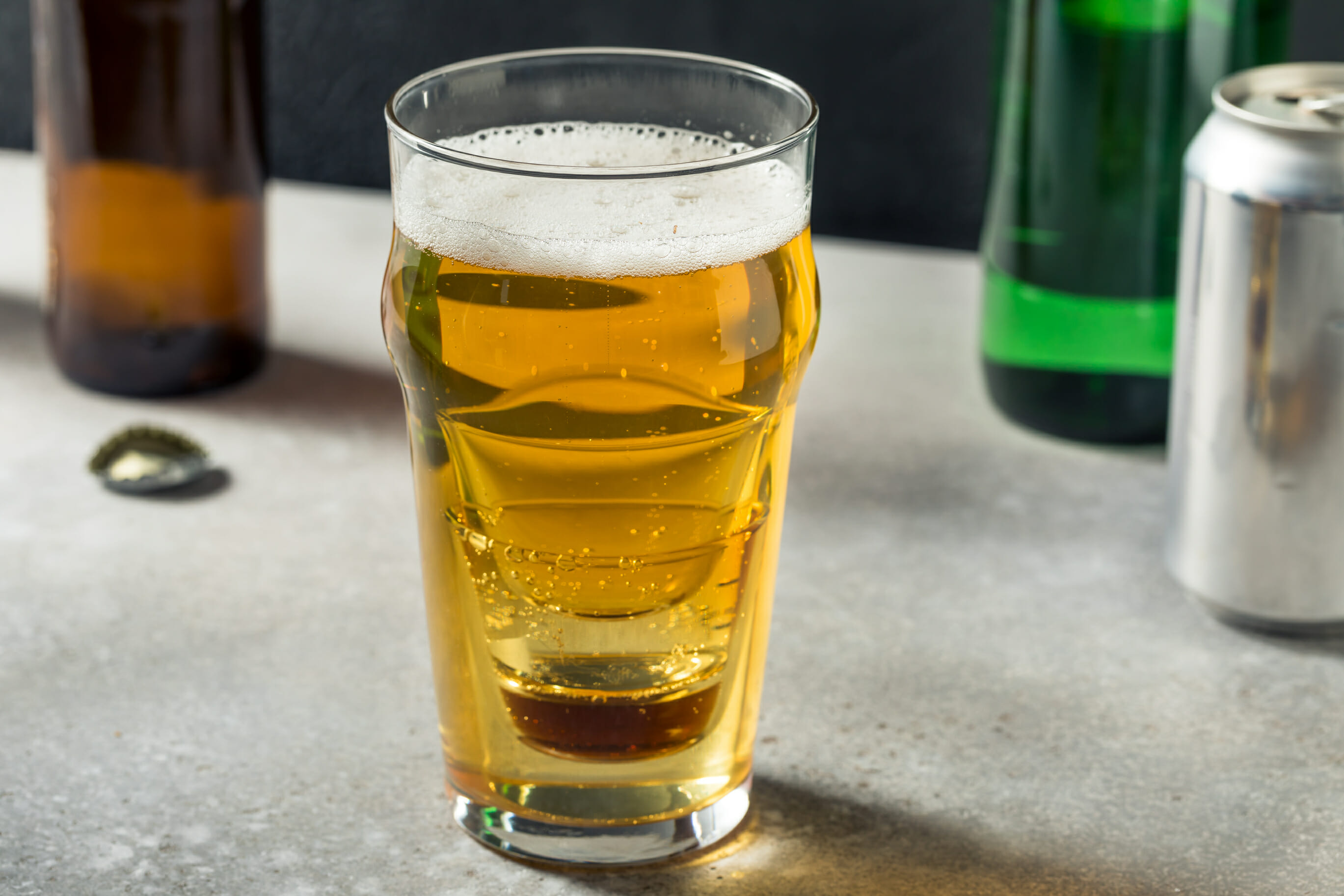
Somaek is a Korean alcoholic drink made from Soju and Korean beer (usually Cass). This drink derives its name from Soju and maekju (the Korean word for beer). When we combine these words, we get (so)ju + (maek)ju!
Somaek is not a drink in itself. While you can find some premixed drinks, this is usually considered a soju cocktail – something people make at soju bars to enhance beer’s potency. It’s also a great option if you can’t quite stomach the taste of Soju alone!
The idea is to drop a shot of Soju (shot glass and all) into a glass of beer. You are then expected to finish the drink as quickly as you can. This is why this particular drink is not to be taken lightly and is only for the adventurous and brave-hearted! So if this speaks to you, Somaek is the drink to try! For this reason, you’ll often hear of this combination referred to as a ‘soju bomb’.
Somaek is popularly consumed at weddings, birthdays, and more gatherings. It’s also eaten alongside delicious meals like Banchan (side dishes) or Jeongol (Korean stew). There are many different types of Somaek that you can try depending on where you’re located in Korea!
Since somaek is a combination of beer and Soju, you can find the combination you prefer. Although Cass and Jinro Chamisul Soju are the most common, you can mix other beers or Soju if you like them!
Otherwise, you can always head down to any of Seoul’s many bars, and you shouldn’t need to wait long to find one that serves Somaek to enjoy!
11. Insamju

In Korea, ginseng is famous. Known for a range of health benefits, the root is almost revered around the peninsula. However, while ginseng is often found in teas and food, there is another less popular form – in Korean alcohol. This alcohol is insamju (ginseng alcohol).
Although insamju is almost always overlooked (especially by younger generations), this alcohol is believed to have a range of medicinal properties. In other words, this is alcohol you don’t need to feel guilty drinking!
Insamju is relatively hard to find, and you won’t find it in most supermarkets or even bars – even in markets, it’s pretty hard to find. This is because insamju is usually homemade and often given as a gift (usually to someone significant).
If you’ve ever visited a Korean household and witnessed a white ginseng root suspended in some kind of liquid, it’s likely insamju. More often than not, it will remain in the jar waiting for a special occasion. This is due to the fact that ginseng is revered, and insamju is usually very expensive.
While insamju is far from the most accessible Korean alcohol to find, I highly recommend trying it if you ever get the chance. Unfortunately, few younger generation Koreans have tried this drink, and even fewer tourists and travellers have ever had the chance. For this reason, I recommend jumping on it if you ever get the chance!
With that being said, imsamju may soon become more common as the Korean government is trying hard to revitalise and rejuvenate the alcohol and its reputation. So, with any luck, insamju will be more common shortly!
12. Gukhwaju

Image from tasteatlas.
Gukhwaju is one of the most interesting Korean alcohols on this list. Based on rice wine, gukhwaja is made unique by the dry chrysanthemum flowers added to the wine. These flowers are macerated as the wine ferments, giving it a unique flavour, unlike any other Korean (or non-Korean) alcohol! Although technically a flower wine (mentioned above), gukhwaju deserves a place on this list due to its popularity.
Gukhwaju can vary greatly in taste, but typically it is somewhat sweet with a beautiful fragrance. Although it’s not usually as sweet as the fruit wines on this list, it does have a subtly sweet taste that makes it perfect for individuals who like sweet wine but find the fruity wines a bit overwhelming.
Although gukhwaju can be purchased at many supermarkets year-round, it is traditionally a seasonal drink consumed on the ninth day of the ninth month of the lunar calendar. So, if you happen to be in Korea during this time, why not enjoy some gukhwaju?
Similar to insamju, gukhwaju is a wine based on cheongju (traditional rice wine). However, the addition of chrysanthemum flowers is what makes this drink unique and gives it a special flavour. Since the base is cheongju, you will find a similar alcohol content of around 12-14% in these drinks.
Are you looking for the perfect pairing? Try this Korean alcohol with jeon! These Korean (savoury) pancakes have a mild taste that pairs perfectly with the sweet taste of gukhwaju.
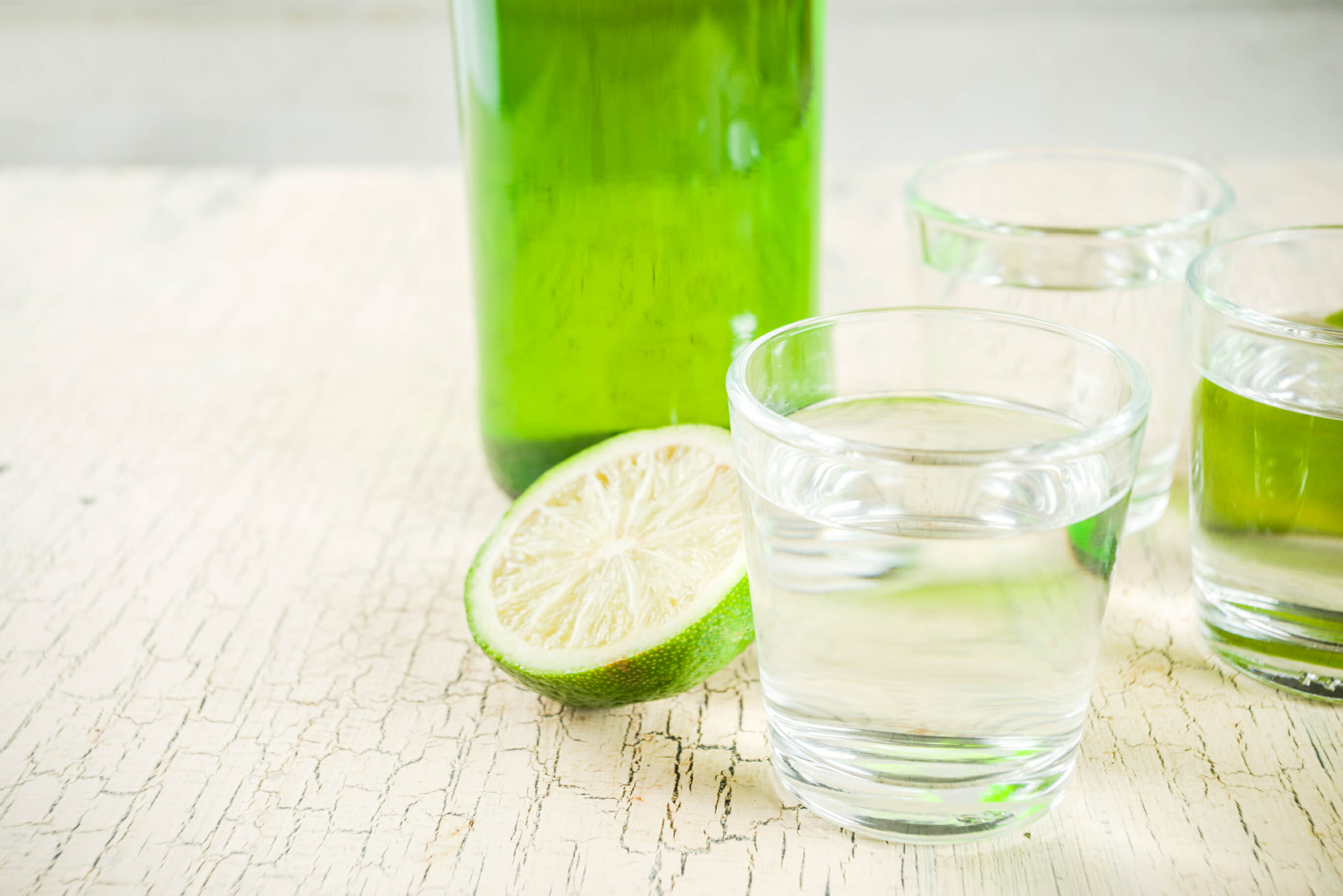
If you’re looking to expand your taste and try a range of Korean alcohols, I recommend starting with soju and makgeolli. However, if you’re seeking to be a bit more adventurous, I highly recommend trying some of the Korean alcohols on this list.
Not only do all of these alcohols have cultural importance, but many of them are totally unique to Korea. For example, drinking makgeolli is an experience unlike any other alcohol. There is something special about the almost yogurt consistency of the drink that just can’t be found elsewhere.
Anyway, I could talk about Korean alcohol for hours – especially makgeolli – however, this article has to come to a conclusion! I hope you can get out there and try all of the alcohols on this list, just remember to drink responsibly!
